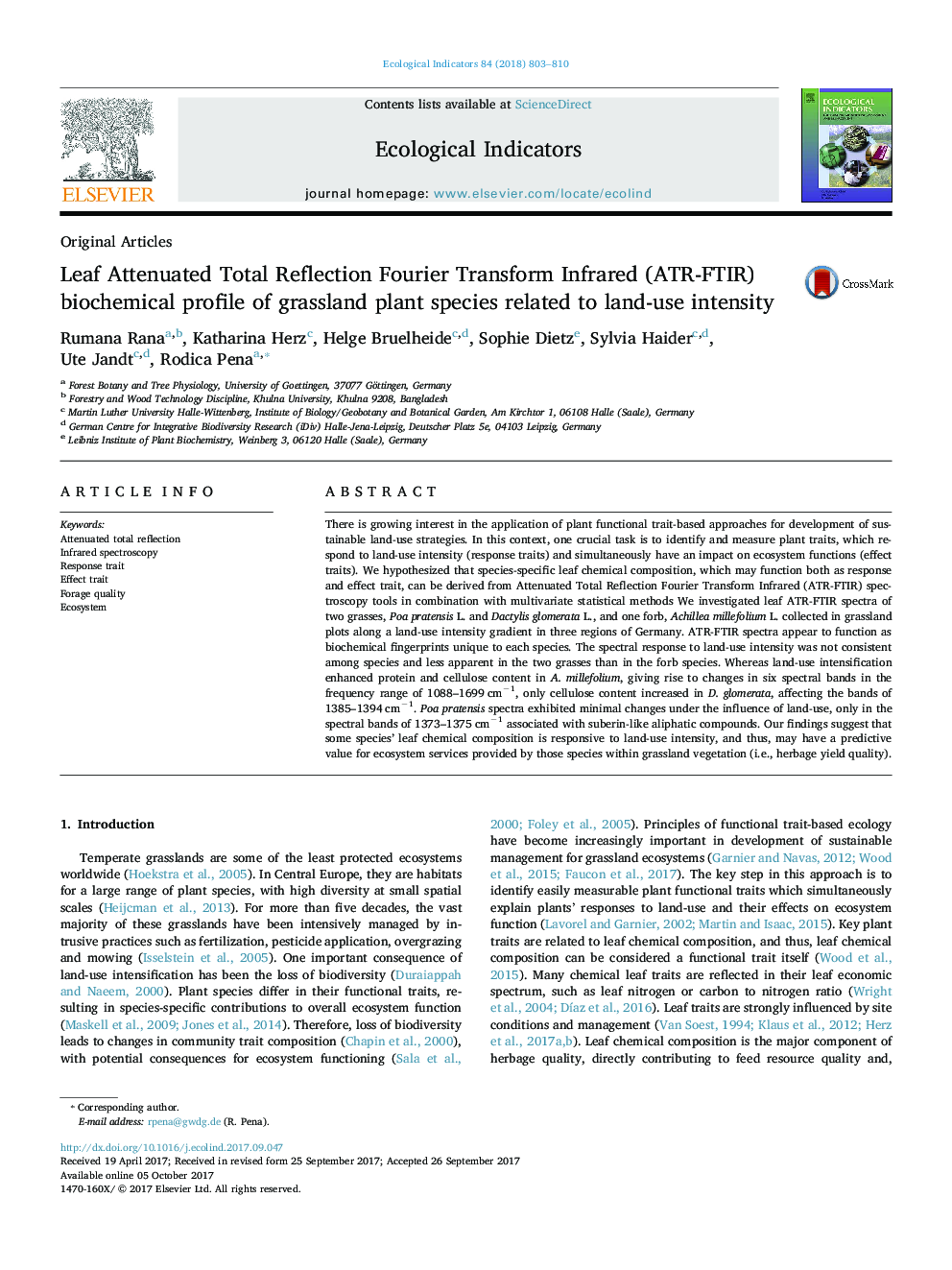| Article ID | Journal | Published Year | Pages | File Type |
|---|---|---|---|---|
| 5741599 | Ecological Indicators | 2018 | 8 Pages |
â¢ATR-FTIR spectroscopy combined with multivariate statistical methods is a reliable tool for biochemical fingerprinting of common grassland plants.â¢The spectral response to land-use intensity is not consistent among grassland species.â¢Land-use intensification impacts more the forb (Achillea millefolium) than grass (Poa pratensis and Dactylis glomerata) species.â¢Protein and cellulose contents increased with land-use intensification in Achillea millefolium.
There is growing interest in the application of plant functional trait-based approaches for development of sustainable land-use strategies. In this context, one crucial task is to identify and measure plant traits, which respond to land-use intensity (response traits) and simultaneously have an impact on ecosystem functions (effect traits). We hypothesized that species-specific leaf chemical composition, which may function both as response and effect trait, can be derived from Attenuated Total Reflection Fourier Transform Infrared (ATR-FTIR) spectroscopy tools in combination with multivariate statistical methods We investigated leaf ATR-FTIR spectra of two grasses, Poa pratensis L. and Dactylis glomerata L., and one forb, Achillea millefolium L. collected in grassland plots along a land-use intensity gradient in three regions of Germany. ATR-FTIR spectra appear to function as biochemical fingerprints unique to each species. The spectral response to land-use intensity was not consistent among species and less apparent in the two grasses than in the forb species. Whereas land-use intensification enhanced protein and cellulose content in A. millefolium, giving rise to changes in six spectral bands in the frequency range of 1088-1699Â cmâ1, only cellulose content increased in D. glomerata, affecting the bands of 1385-1394Â cmâ1. Poa pratensis spectra exhibited minimal changes under the influence of land-use, only in the spectral bands of 1373-1375Â cmâ1 associated with suberin-like aliphatic compounds. Our findings suggest that some species' leaf chemical composition is responsive to land-use intensity, and thus, may have a predictive value for ecosystem services provided by those species within grassland vegetation (i.e., herbage yield quality).
Graphical abstractDownload high-res image (125KB)Download full-size image
